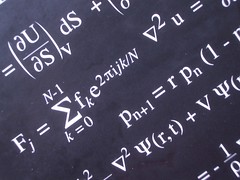 |
I have now placed a preprint on the arXiv entitled “Linear duals of graded bundles and higher analogues of (Lie) algebroids” (arXiv:1409.0439 [math-ph],) which is joint work with J. Grabowski and K. Grabowska. |
In this preprint (which we will shortly submit for publication) we develop some technology based on n-tuple graded bundles as first studied by Grabowski & Rotkiewicz, to define the notion of a linear dual of a graded bundle. As graded bundles are not simply vector bundles, they are polynomial bundles, the notion of a dual is not immediately obvious. We propose that the linear dual of a graded bundle be a particular reduction of the cotangent bundle of the said graded bundle. Related to the linear dual is the notion of the linearisation functor which takes a graded bundle and produces a double graded bundle for which the two side bundles are vector bundles. The linearisation can also be understood in terms of a particular reduction of the tangent bundle of the graded bundle.
From there we define the notion of a weighted skew/Lie algebroid, which is loosely a skew/Lie algebroid carrying some extra gradings. Interestingly, these objects are closely related to higher Lie algebroids as defined by Voronov in terms of a weight-one homological vector field on a non–negatively graded supermanifold and the \(\mathcal{VB}\)-algebroids as studied by Mackenzie, Gracia-Saz & Mehta and most recently by Brahic, Cabrera & Ortiz.
There are plenty of canonical examples of weighted algebroids including tangent bundles of graded bundles, the linearisation of higher order tangent bundles and in particular the reduction of higher order tangent bundles on Lie groupoids, again via linearisation.
For all the details and proper references consult the preprint.
This work is purely theoretical mathematics, though we are now looking towards applications in geometric mechanics. So watch this space…





